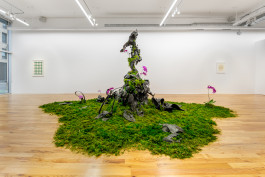
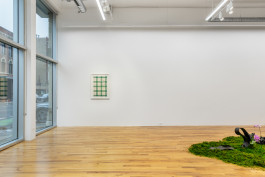
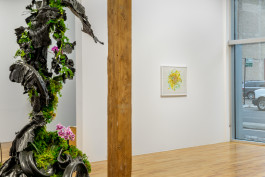
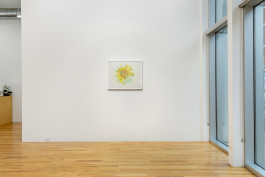
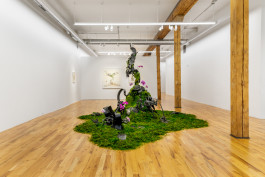
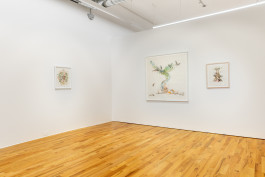

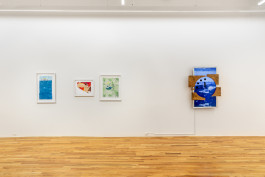
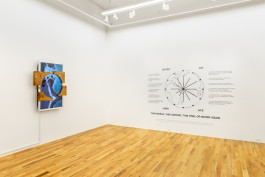
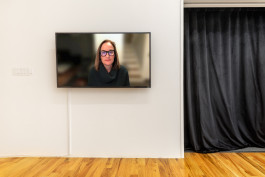
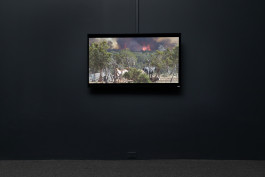
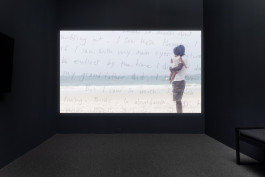
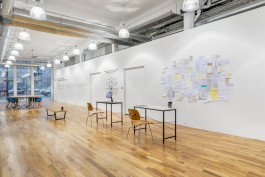
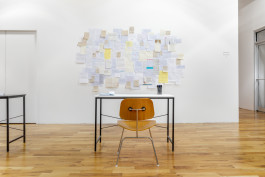
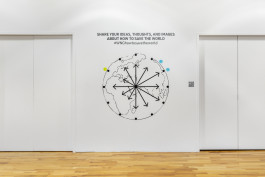
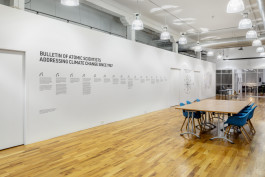
Human/Nature
● Installation
● Additional Images
● Public Programs
● Press
Explore
● Curator's Note
● Selected photography by Stas Bartnikas
Participate
● Matthew Ritchie, Life Clock, 2022
Watch
▶︎ Statements, 2021–2022
▶︎ Donovan Quintero, Untitled, 2011–2021
▶︎ Regan Rosburg, dear future, 2020
Jan 14–Apr 16, 2022
Laura Ball, Stas Bartnikas, Obvious, Donovan Quintero, Karen Reimer, Matthew Ritchie, Regan Rosburg
Weinberg/Newton Gallery, in partnership with the Bulletin of the Atomic Scientists, presents Human/Nature, an exhibition addressing one of the most urgent issues of our time—climate change.
Human/Nature, installation views at Weinberg/Newton Gallery, 2022; photography by Evan Jenkins
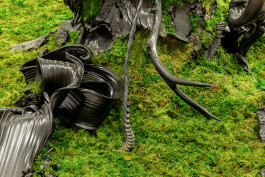
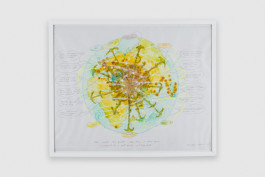
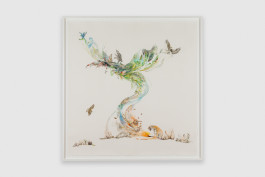
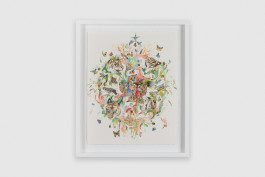
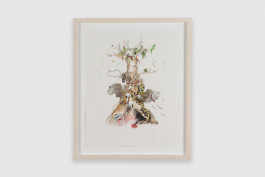
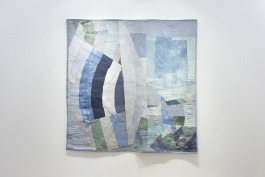
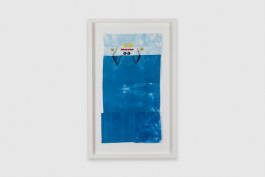

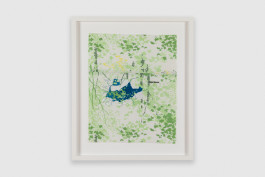
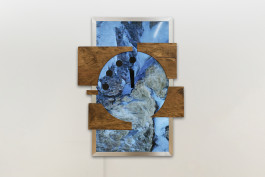
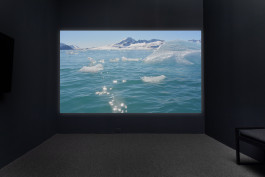
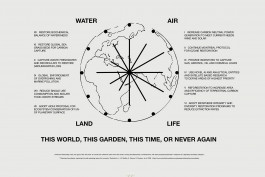
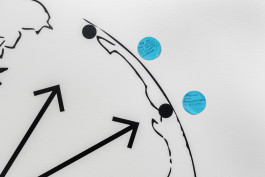
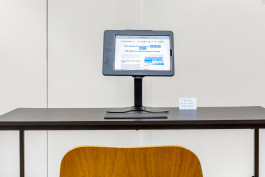
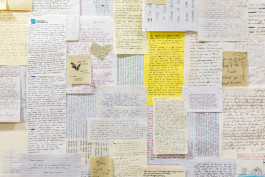
Statements, 2021/2022. Recorded commentary on issues of climate change from scientists, politicians, journalists, artists, and organizational leaders.
Featuring: Tristan Baurick, Beth Beloff, Kennette Benedict, Rachel Bronson, Governor Jerry Brown, Sivan Kartha, John Morales, Obvious, Karen Reimer, Matthew Ritchie, Regan Rosburg, Rob Socolow, and David Weinberg.
Curator’s Note
Humanity is at a critical crossroads—it is widely acknowledged that we must take immediate action or our planet will face irreversible climate catastrophe. The exhibition combines visual imagery and scientific interviews to explore our paths forward. What will the world look like if we do not reverse our current path? Alternatively, what will the future look like if we take action now?
— Cyndi Conn, Curator of Human/Nature
Public Programs
75th Anniversary Doomsday Clock Announcement
Thu, Jan 20, 9am
The Bulletin of the Atomic Scientists will host a live virtual news conference at 9am CT Thursday, January 20th to announce the 2022 Doomsday Clock time and commence the 75th anniversary of the iconic Clock. For 75 years, the Doomsday Clock has acted as a metaphor for how close humanity is to self-annihilation. Since 1947, it has also served as a call-to-action to reverse the hands, which have moved backwards before.
At doom’s doorstep: It is 100 second to midnight
Fri, Feb 4, 10–11am
Engage with the experts who set the Bulletin of the Atomic Scientists iconic Doomsday Clock. On Feb. 4, join Bulletin Science and Security Board members Robert Latiff, Suzet McKinney, Robert Socolow, and Jon Wolfsthal in conversation with Bulletin President and CEO, Rachel Bronson about the factors that went into setting the 2022 Doomsday Clock time. Plus, we’ll discuss ways we can #TurnBackTheClock.
Artist Panel
Sat, Feb 19, 1pm
▶︎ Watch the Program
Moving forward together: A climate scientist’s vision for collaboration
Sun, Mar 6, 5–6:45pm CST
5–6pm: Gallery open for viewing
6–6:45pm: Discussion
Join this in person program featuring Chief Scientist of The Nature Conservancy, Katharine Hayhoe, Moving forward together: A climate scientist's vision for collaboration, moderated by Bulletin President and CEO, Rachel Bronson. We'll discuss how it's possible to mobilize collective action against the climate change problem despite our differences.
Reception
Fri, Mar 18, 5–7pm
Reservations encouraged. Limited walk-ins will be accepted, however gallery access is subject to available space.
Family Day
Sat, Apr 2, 1–4pm
Explore our current exhibitions Human/Nature, learn about climate change issues, and create art inspired by the exhibition. Hands-on art making activities are for all ages and include: patch embroidery designed by exhibition artist Karen Reimer, button making, beaded message bracelet design, and more. Visitors are invited to work on these activities with our education team in our program space or take an embroidery kit home.
Partner
The Bulletin of Atomic Scientists equips the public, policymakers, and scientists with the information needed to reduce man-made threats to our existence. The Bulletin is a media organization, posting free articles on its website and publishing a premium digital magazine. In addition, the Bulletin’s website, iconic Doomsday Clock, and regular events help advance actionable ideas at a time when technology is outpacing our ability to control it. The Bulletin focuses on three main areas: nuclear risk, climate change, and disruptive technologies. What connects these topics is a driving belief that because humans created them, we can control them.
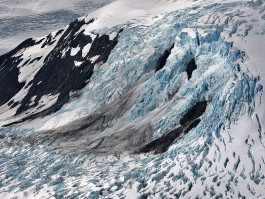
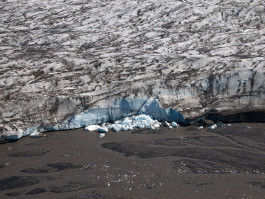
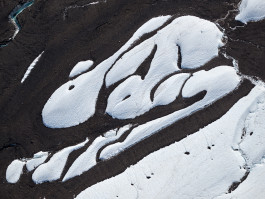
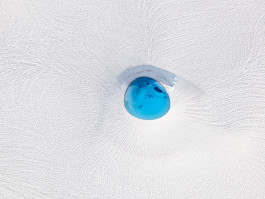
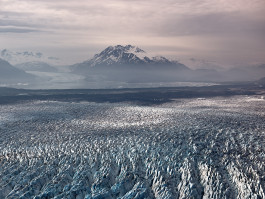
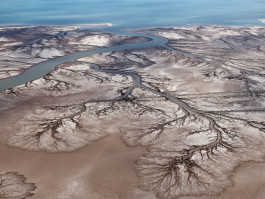
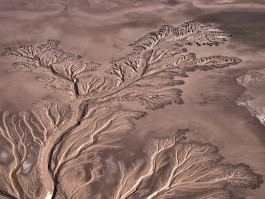
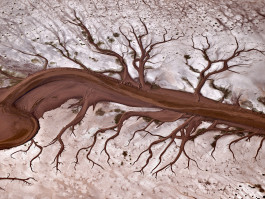
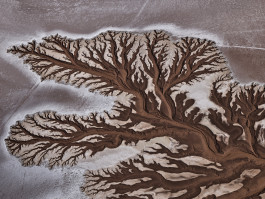
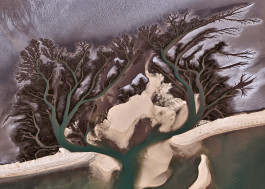
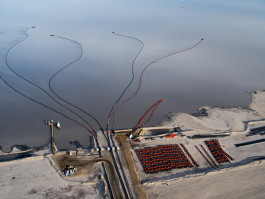
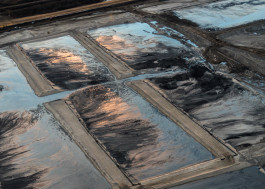
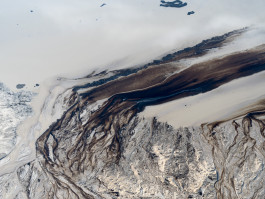
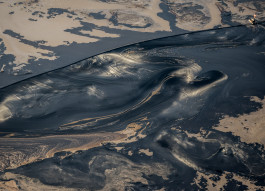
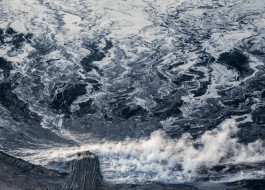
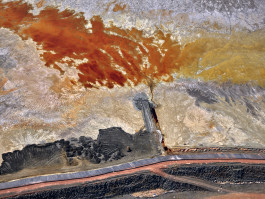
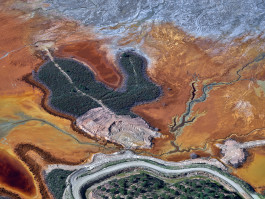
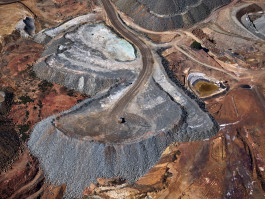
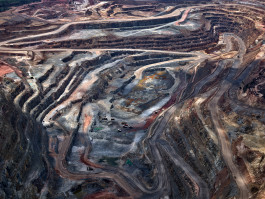
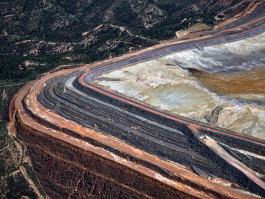
Extended captions: Selected photography by Stas Bartnikas
Alaska
Summer of 2019 was one of the hottest in Alaska. The temperature went above 30 degrees Celsius. It became very obvious that the scale of global warming isn’t exaggerated. Extreme temperatures have direct impact on melting of the glaciers. The photos presented are taken from a float plane and show Alaskan glaciers from above in their current state. They still look magnificent. But we need to keep in mind that the process of melting is far under way and very soon the photos might become the only proof of their former glory. There are more than 100 000 glaciers in Alaska. And they are melting at the rate not seen in hundreds of years. It is truly sad to realize that the next time we see these same glaciers they are not going to look the same.
[Above, row 1]
Colorado River
This series of photographs of the Colorado River was taken from a small plane in Baja California, Mexico, where the river meets the ocean. As it is known, the Colorado River is very shallow due to the active use of water for agricultural purposes. Environmentalists in the United States and Mexico have long been concerned about this situation. A few years ago, they managed to agree on the opening of the Marelos dam for a short time to fill the river delta with water. However, despite all the efforts, this place still looks quite dehydrated.
[Above, row 2]
Fort McMurray
These aerial images are taken from a small plane while flying over oil sands production plants in Fort McMurray, Alberta, Canada. Large scale oil mining operations cause huge damage to the natural environment and the population of the country. The Alberta Tar sands are the fastest growing source of greenhouse gas emission in Canada. About 90 percent of the water used to process the tar sands ends up in a very toxic tailing ponds that line the longest river in Alberta, the Athabaska River. The ponds are already leaking over 11 million litres a day of heavily contaminated water into the environment. Approximately 8000 ducks drown in those ponds annually. So the mission of these pictures is to attract attention to the terrible environmental issues that oil sands production cause to our planet.
[Above, row 3]
Rio Tinto
Rio Tinto mines are known to be one of the oldest in the world. They stand as silent proof of how humans mistreat nature in order to gain profit. Gold, copper and other ore has been tirelessly extracted for over 5000 years. What aggravates its environmental impact is that Rio Tinto river shores are only 20 kilometres away from the mines and acid drainage brings heavy metals into the water which causes severe environmental problems in the area. Nowadays Rio Tinto is a touristic spot and at the same time - still an active mining place.
[Above, row 4]
–Stas Bartnikas
Donovan Quintero, Untitled, 2011–2021, 2:16 mins. Photography and excerpts from Navajo Times articles “Delegates Tour Drought-Stricken Rez” and “Making it Rain.”
Share your ideas, thoughts, and images
about how to save the world
#WNGhowtosavetheworld
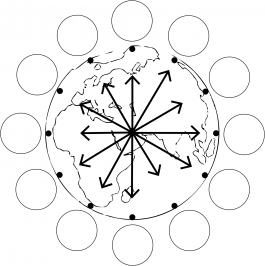
Matthew Ritchie, Life Clock, 2022
Regan Rosburg, dear future, 2020, 5:11 mins. Short film featuring letters from Everything is Fine. Designed, edited, and produced by the artist.
















Human/Nature
● Installation
● Additional Images
● Public Programs
● Press
Explore
● Curator's Note
● Selected photography by Stas Bartnikas
Participate
● Matthew Ritchie, Life Clock, 2022
Watch
▶︎ Statements, 2021–2022
▶︎ Donovan Quintero, Untitled, 2011–2021
▶︎ Regan Rosburg, dear future, 2020















Jan 14–Apr 16, 2022
Laura Ball, Stas Bartnikas, Obvious, Donovan Quintero, Karen Reimer, Matthew Ritchie, Regan Rosburg
Weinberg/Newton Gallery, in partnership with the Bulletin of the Atomic Scientists, presents Human/Nature, an exhibition addressing one of the most urgent issues of our time—climate change.
Human/Nature, installation views at Weinberg/Newton Gallery, 2022; photography by Evan Jenkins
Statements, 2021/2022. Recorded commentary on issues of climate change from scientists, politicians, journalists, artists, and organizational leaders.
Featuring: Tristan Baurick, Beth Beloff, Kennette Benedict, Rachel Bronson, Governor Jerry Brown, Sivan Kartha, John Morales, Obvious, Karen Reimer, Matthew Ritchie, Regan Rosburg, Rob Socolow, and David Weinberg.
Curator’s Note
Humanity is at a critical crossroads—it is widely acknowledged that we must take immediate action or our planet will face irreversible climate catastrophe. The exhibition combines visual imagery and scientific interviews to explore our paths forward. What will the world look like if we do not reverse our current path? Alternatively, what will the future look like if we take action now?
— Cyndi Conn, Curator of Human/Nature
Public Programs
75th Anniversary Doomsday Clock Announcement
Thu, Jan 20, 9am
The Bulletin of the Atomic Scientists will host a live virtual news conference at 9am CT Thursday, January 20th to announce the 2022 Doomsday Clock time and commence the 75th anniversary of the iconic Clock. For 75 years, the Doomsday Clock has acted as a metaphor for how close humanity is to self-annihilation. Since 1947, it has also served as a call-to-action to reverse the hands, which have moved backwards before.
At doom’s doorstep: It is 100 second to midnight
Fri, Feb 4, 10–11am
Engage with the experts who set the Bulletin of the Atomic Scientists iconic Doomsday Clock. On Feb. 4, join Bulletin Science and Security Board members Robert Latiff, Suzet McKinney, Robert Socolow, and Jon Wolfsthal in conversation with Bulletin President and CEO, Rachel Bronson about the factors that went into setting the 2022 Doomsday Clock time. Plus, we’ll discuss ways we can #TurnBackTheClock.
Artist Panel
Sat, Feb 19, 1pm
▶︎ Watch the Program
Moving forward together: A climate scientist’s vision for collaboration
Sun, Mar 6, 5–6:45pm CST
5–6pm: Gallery open for viewing
6–6:45pm: Discussion
Join this in person program featuring Chief Scientist of The Nature Conservancy, Katharine Hayhoe, Moving forward together: A climate scientist's vision for collaboration, moderated by Bulletin President and CEO, Rachel Bronson. We'll discuss how it's possible to mobilize collective action against the climate change problem despite our differences.
Reception
Fri, Mar 18, 5–7pm
Reservations encouraged. Limited walk-ins will be accepted, however gallery access is subject to available space.
Family Day
Sat, Apr 2, 1–4pm
Explore our current exhibitions Human/Nature, learn about climate change issues, and create art inspired by the exhibition. Hands-on art making activities are for all ages and include: patch embroidery designed by exhibition artist Karen Reimer, button making, beaded message bracelet design, and more. Visitors are invited to work on these activities with our education team in our program space or take an embroidery kit home.
Partner
The Bulletin of Atomic Scientists equips the public, policymakers, and scientists with the information needed to reduce man-made threats to our existence. The Bulletin is a media organization, posting free articles on its website and publishing a premium digital magazine. In addition, the Bulletin’s website, iconic Doomsday Clock, and regular events help advance actionable ideas at a time when technology is outpacing our ability to control it. The Bulletin focuses on three main areas: nuclear risk, climate change, and disruptive technologies. What connects these topics is a driving belief that because humans created them, we can control them.




















Extended captions: Selected photography by Stas Bartnikas
Alaska
Summer of 2019 was one of the hottest in Alaska. The temperature went above 30 degrees Celsius. It became very obvious that the scale of global warming isn’t exaggerated. Extreme temperatures have direct impact on melting of the glaciers. The photos presented are taken from a float plane and show Alaskan glaciers from above in their current state. They still look magnificent. But we need to keep in mind that the process of melting is far under way and very soon the photos might become the only proof of their former glory. There are more than 100 000 glaciers in Alaska. And they are melting at the rate not seen in hundreds of years. It is truly sad to realize that the next time we see these same glaciers they are not going to look the same.
[Above, row 1]
Colorado River
This series of photographs of the Colorado River was taken from a small plane in Baja California, Mexico, where the river meets the ocean. As it is known, the Colorado River is very shallow due to the active use of water for agricultural purposes. Environmentalists in the United States and Mexico have long been concerned about this situation. A few years ago, they managed to agree on the opening of the Marelos dam for a short time to fill the river delta with water. However, despite all the efforts, this place still looks quite dehydrated.
[Above, row 2]
Fort McMurray
These aerial images are taken from a small plane while flying over oil sands production plants in Fort McMurray, Alberta, Canada. Large scale oil mining operations cause huge damage to the natural environment and the population of the country. The Alberta Tar sands are the fastest growing source of greenhouse gas emission in Canada. About 90 percent of the water used to process the tar sands ends up in a very toxic tailing ponds that line the longest river in Alberta, the Athabaska River. The ponds are already leaking over 11 million litres a day of heavily contaminated water into the environment. Approximately 8000 ducks drown in those ponds annually. So the mission of these pictures is to attract attention to the terrible environmental issues that oil sands production cause to our planet.
[Above, row 3]
Rio Tinto
Rio Tinto mines are known to be one of the oldest in the world. They stand as silent proof of how humans mistreat nature in order to gain profit. Gold, copper and other ore has been tirelessly extracted for over 5000 years. What aggravates its environmental impact is that Rio Tinto river shores are only 20 kilometres away from the mines and acid drainage brings heavy metals into the water which causes severe environmental problems in the area. Nowadays Rio Tinto is a touristic spot and at the same time - still an active mining place.
[Above, row 4]
–Stas Bartnikas
Donovan Quintero, Untitled, 2011–2021, 2:16 mins. Photography and excerpts from Navajo Times articles “Delegates Tour Drought-Stricken Rez” and “Making it Rain.”
Share your ideas, thoughts, and images
about how to save the world
#WNGhowtosavetheworld

Matthew Ritchie, Life Clock, 2022
Regan Rosburg, dear future, 2020, 5:11 mins. Short film featuring letters from Everything is Fine. Designed, edited, and produced by the artist.